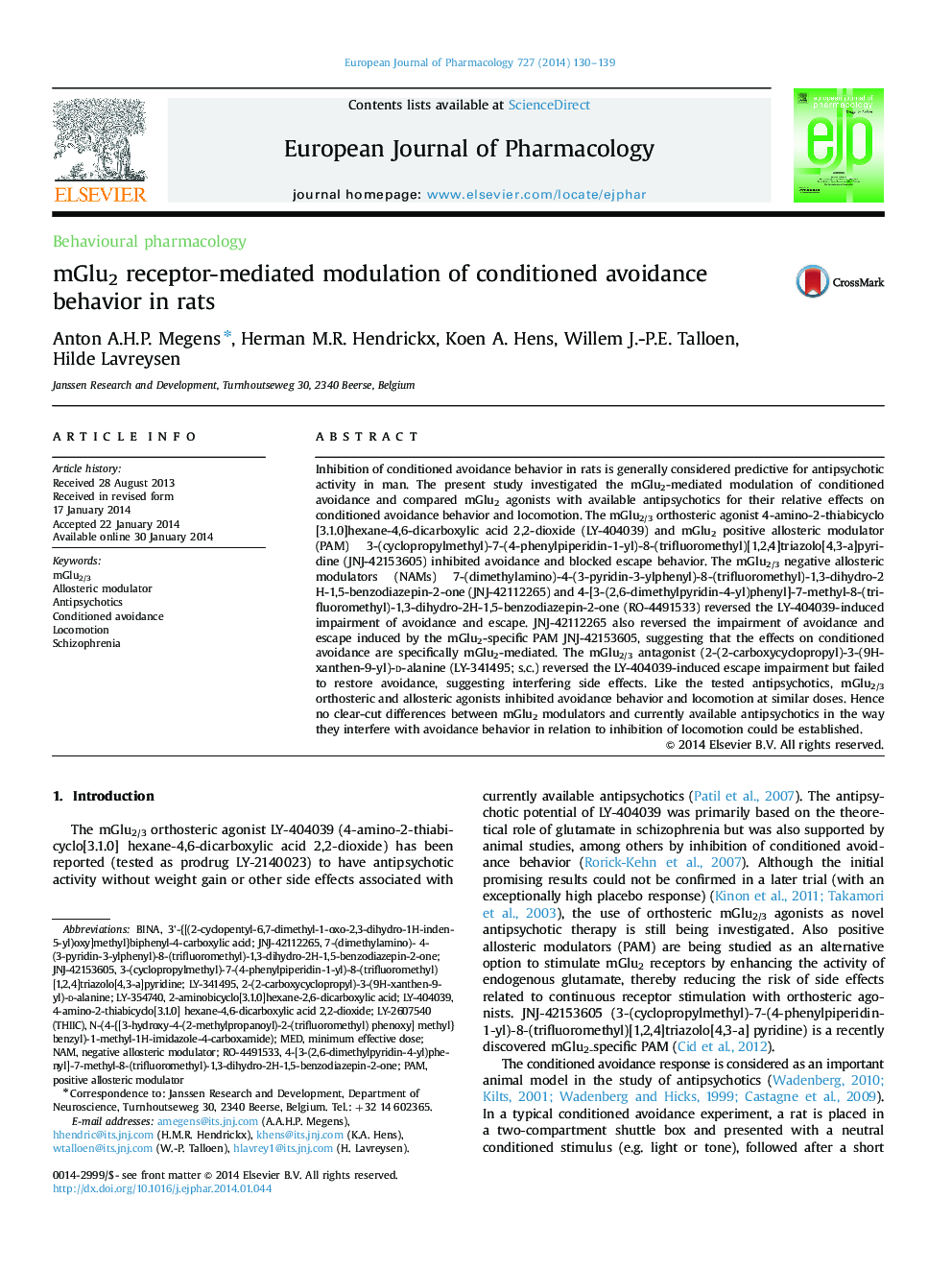| Article ID | Journal | Published Year | Pages | File Type |
|---|---|---|---|---|
| 2531951 | European Journal of Pharmacology | 2014 | 10 Pages |
Abstract
Inhibition of conditioned avoidance behavior in rats is generally considered predictive for antipsychotic activity in man. The present study investigated the mGlu2-mediated modulation of conditioned avoidance and compared mGlu2 agonists with available antipsychotics for their relative effects on conditioned avoidance behavior and locomotion. The mGlu2/3 orthosteric agonist 4-amino-2-thiabicyclo[3.1.0]hexane-4,6-dicarboxylic acid 2,2-dioxide (LY-404039) and mGlu2 positive allosteric modulator (PAM) 3-(cyclopropylmethyl)-7-(4-phenylpiperidin-1-yl)-8-(trifluoromethyl)[1,2,4]triazolo[4,3-a]pyridine (JNJ-42153605) inhibited avoidance and blocked escape behavior. The mGlu2/3 negative allosteric modulators (NAMs) 7-(dimethylamino)-4-(3-pyridin-3-ylphenyl)-8-(trifluoromethyl)-1,3-dihydro-2 H-1,5-benzodiazepin-2-one (JNJ-42112265) and 4-[3-(2,6-dimethylpyridin-4-yl)phenyl]-7-methyl-8-(trifluoromethyl)-1,3-dihydro-2H-1,5-benzodiazepin-2-one (RO-4491533) reversed the LY-404039-induced impairment of avoidance and escape. JNJ-42112265 also reversed the impairment of avoidance and escape induced by the mGlu2-specific PAM JNJ-42153605, suggesting that the effects on conditioned avoidance are specifically mGlu2-mediated. The mGlu2/3 antagonist (2-(2-carboxycyclopropyl)-3-(9H-xanthen-9-yl)-d-alanine (LY-341495; s.c.) reversed the LY-404039-induced escape impairment but failed to restore avoidance, suggesting interfering side effects. Like the tested antipsychotics, mGlu2/3 orthosteric and allosteric agonists inhibited avoidance behavior and locomotion at similar doses. Hence no clear-cut differences between mGlu2 modulators and currently available antipsychotics in the way they interfere with avoidance behavior in relation to inhibition of locomotion could be established.
Keywords
Related Topics
Life Sciences
Neuroscience
Cellular and Molecular Neuroscience
Authors
Anton A.H.P. Megens, Herman M.R. Hendrickx, Koen A. Hens, Willem J.-P.E. Talloen, Hilde Lavreysen,
